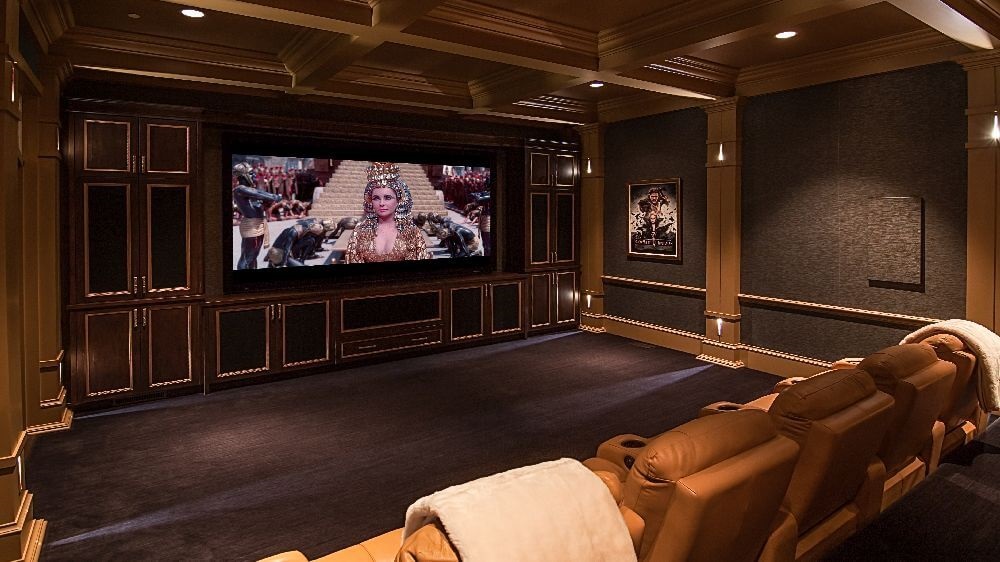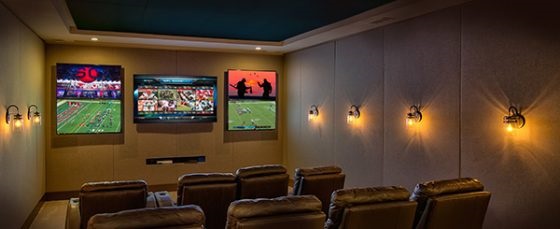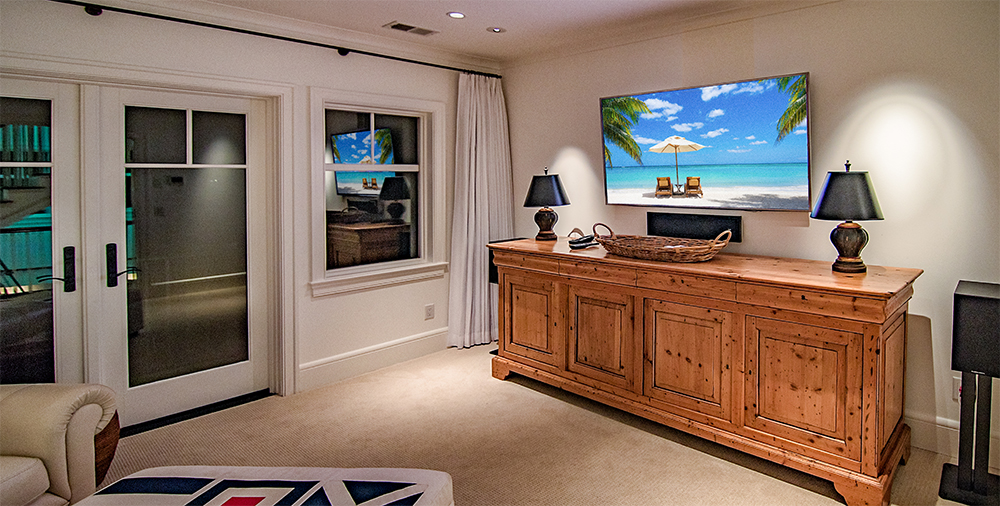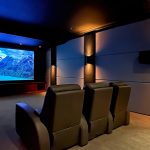What to Know When Considering a Home Theater – Part 2
This part 2 of the What to Know When Considering a Home Theater series covers the options, pros and cons, of different kinds of video systems that one might use in a home theater or media room. For part 1 of this series on rooms basics and first considerations, click here.
Projectors Vs. Televisions
While there are many nuances between projectors and flat-panel televisions, the factors that loom large in such a decision are image size, light control, and expense.
Going back to the early days of home theaters, projectors were the only way to get an image size big enough to get that movie theater feel. For many medium home theaters, the required screen size to achieve this would be in the range of 100” to 120” (measured diagonally). The common large size flat panel televisions today are in the 65” to 85”, which while quite large, do not quite achieve the screen sizes that would be expected in a true home theater.

While the flexibility in size is a huge advantage of projectors, they do have some practical drawbacks in that the on-screen image can be affected by the ambient light in the room. Projectors these days are very bright and screen material advances have mitigated this issue to the extent that turning on a lamp has only the slightest impact on the video image, however when it comes to windows letting in sunlight or any other source of very bright light, the image can get washed out. In some rooms, control of ambient light can be quite easy, while in other rooms it can make a projection system completely impractical.
The costs of flat-panel televisions have dropped dramatically throughout the years, all the while increasing in video resolution and overall quality. In the decades that projectors have been in use in home theaters they too have followed a similar trend, but not nearly so dramatically. While the budget for a quality, large flat-panel television might be a few thousand dollars; it is not uncommon for projection systems to be double or triple that.
The comparison of these two broad categories of video system can be very much one of apples and oranges, and choosing a room or having a particular design vision may make the decision between these two technologies obvious. Additionally, there are outlier options that have not been discussed here such as super “short-throw” projectors and fixed-pixel displays solutions that can make for very large screens at quality levels good enough for use in a home theater. It is always recommended to discuss all of the potential options with an audio-video system designer.

What to Watch
The choice of video sources to plan for in a Home Theater is an important one, and the expense of a projector system or very large flat-screen TV should warrant using quality video sources. In today’s world of streaming video content, the well-known options are devices like AppleTV, Roku, and Amazon’s Fire Stick. Compared to the days of VHS, these new streaming devices are wondrous, however there are some options that are better than others.
- Some streaming boxes have limited output for home theater surround sound and may require add on hardware to get them to work properly.
- Some have less processing power than others and may be only capable of connecting to the internet through a WIFI connection, bogging down a network unnecessarily.
- Some of them might be capable of enhanced video capabilities such as High Dynamic Range (HDR) while others are not.
It is always a best practice to discuss preferences on these devices with an experienced AV designer.
When considering alternatives to streaming sources, cable or satellite boxes for classic television viewing is always an option and oftentimes the best option for live television programming and sporting events. Disc player systems for media such as Bluray disc is still an option and a great one for those who have a large library of DVD and Bluray discs.
By far the best quality recommendation that Custom Audio Video can make for a home theater is the Kaliedescape movie system. A system where movies can be purchased digitally, but instead of streaming that movie to your screen while it is being watched, the movies are downloaded to a hard drive in the home, allowing the system to play back the movie in the highest quality format possible, something that no streaming box or smart TV can do. For those looking for the best of the best, the Kaliedescape system is worth exploring.

This month’s newsletter just skims the surface of the wide range of options and quality levels for Home Theaters. If you have questions reach out to us at Custom Audio Video and we will be happy to help.
For more reading on Home Theaters and Media Rooms, click here.










